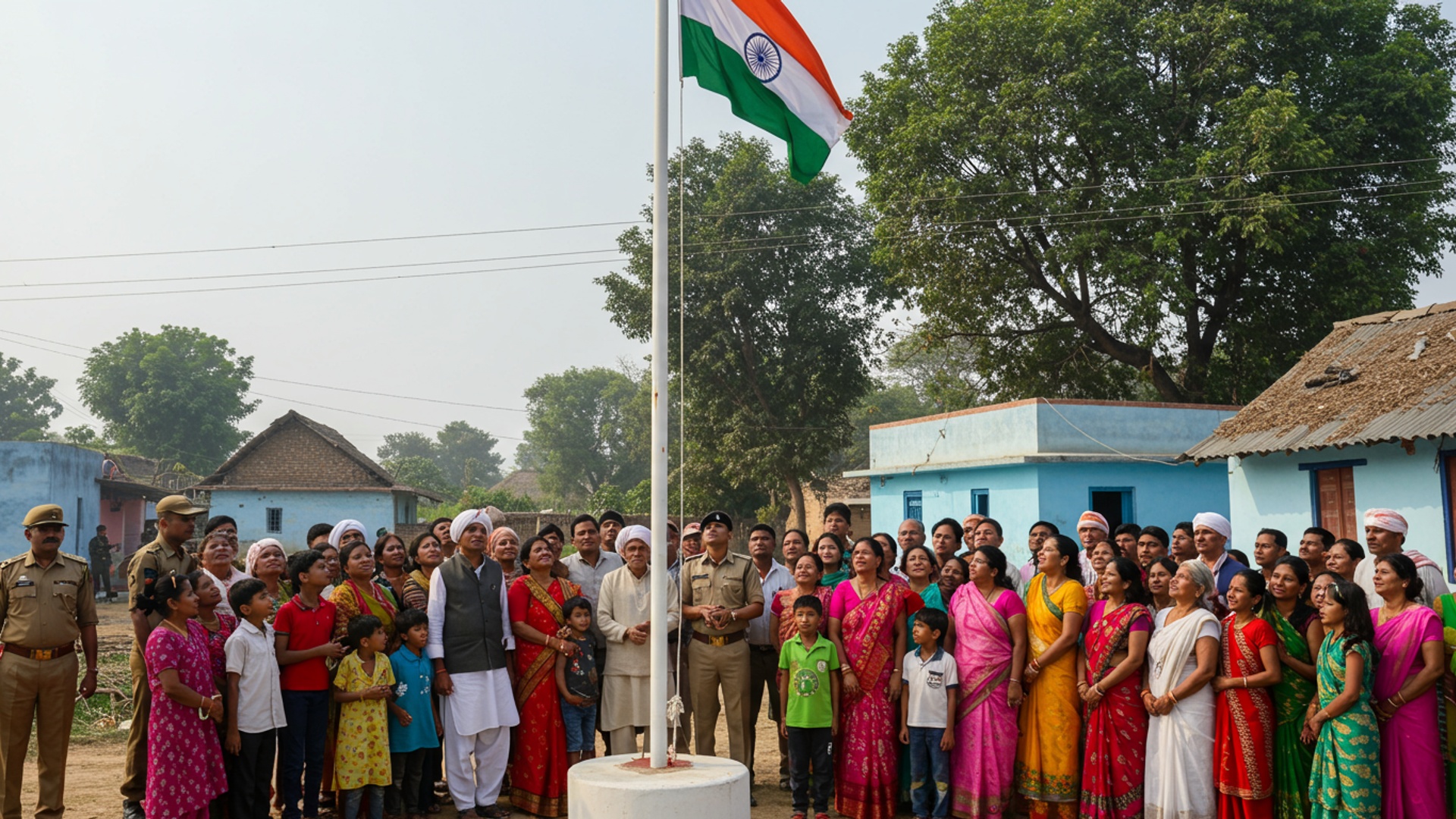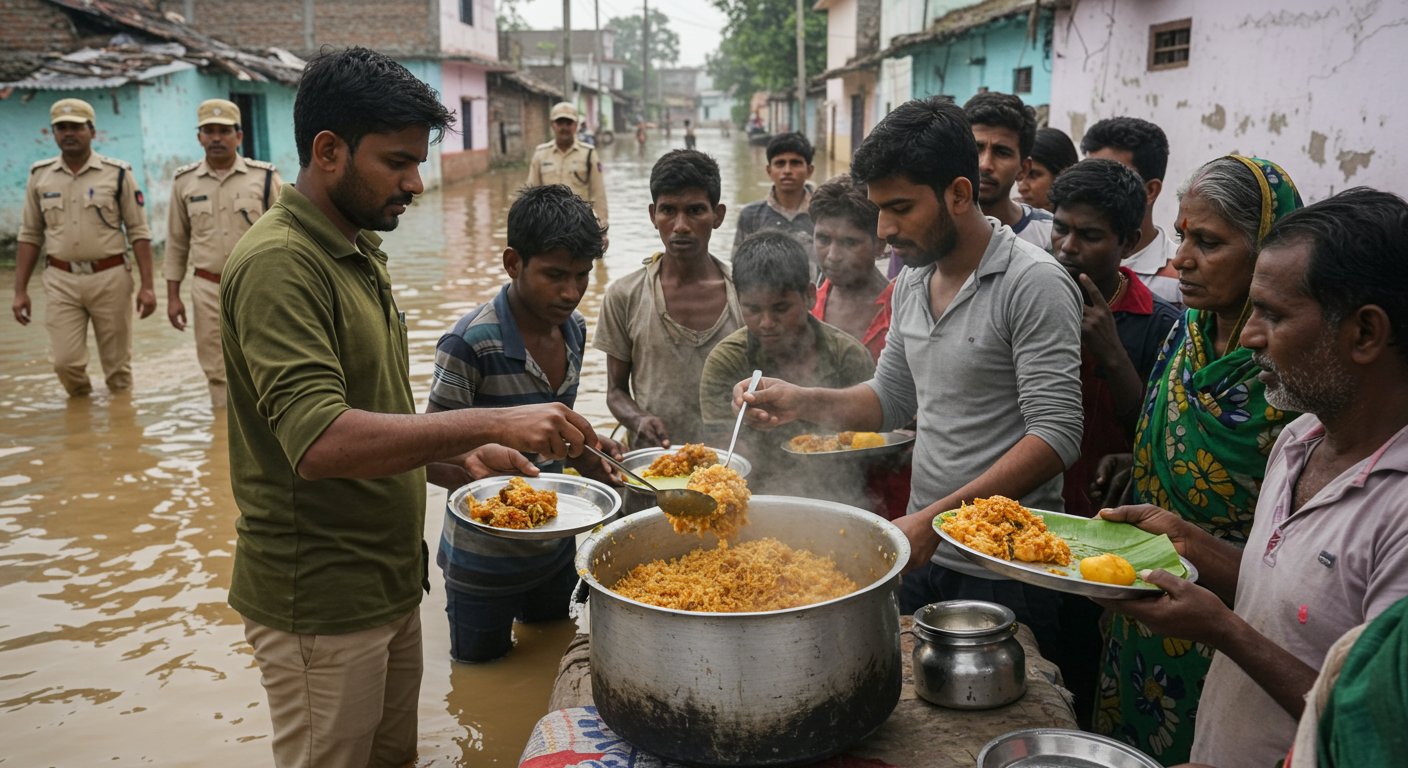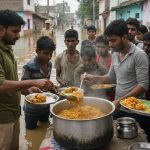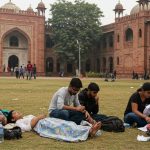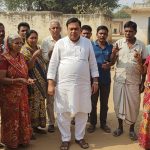A historic wave of freedom sweeps through Bastar as 29 villages, long silenced by Naxal control, proudly raise the Indian Tricolour for their very first Independence Day celebration. For decades, these remote communities lived under the shadow of insurgency, unable to mark the nation’s birth with public displays of patriotism. Now, with a significant shift in security and outreach, residents are openly embracing national identity, marking a monumental step towards peace and mainstream integration in a region once defined by conflict.
A New Dawn in Remote Villages
In a significant shift, twenty-nine villages across the Bastar region recently witnessed their first formal celebration of India’s Independence Day. For decades, these communities, deeply affected by Naxal control and lack of access, had been cut off from mainstream society. The sight of the national flag, the tricolour, being hoisted and flutter proudly in these remote areas marked a historic moment for their residents, symbolizing a fresh start and the reach of governance into previously untouched territories.
The celebrations, held with enthusiasm and hope, saw villagers gathering to witness the hoisting of the flag by local officials and community leaders. This was a stark contrast to previous years, where fear and the presence of extremist groups prevented such public displays of national pride. The event signifies a major step towards normalcy and integration for these long-isolated populations.
Years of Isolation and Struggle
For many years, numerous villages in the Bastar division of Chhattisgarh have lived under the shadow of Naxal influence. This region, known for its dense forests and difficult terrain, became a stronghold for these groups, leading to limited government presence and development. Villagers often found themselves caught between security forces and the extremists, facing hardship and a lack of basic facilities like roads, schools. healthcare.
The absence of governmental control meant that services and national programs rarely reached these areas. Children grew up without proper education. access to medical aid was severely restricted. The hoisting of the tricolour, therefore, represents not just a symbolic act. a tangible sign that these villages are now beginning to experience the benefits of being part of the larger national fabric. It marks the start of an effort to bring these communities into the fold, ensuring they receive the same opportunities as other parts of the country.
Bringing Change to Remote Areas
The change witnessed in these twenty-nine villages is the result of focused efforts by the administration and security forces. A key strategy has been the establishment of new police camps in previously inaccessible or high-risk zones. These camps have helped in creating a safer environment, pushing back the influence of Naxal groups. instilling confidence among the local population.
Alongside enhanced security, the government has also prioritized development work. Road construction has been a crucial factor, linking these villages to nearby towns and main roads. This connectivity is vital for both security and the delivery of essential services and goods. Other initiatives include the re-opening of schools and the setting up of basic health centers. These actions are slowly but surely transforming the lives of the villagers.
“For years, fear kept us from celebrating. Now, with the police camp nearby and the road being built, we feel safe. Our children can dream of a better future. This flag means a lot to us,” shared a village elder from one of the newly accessible areas.
The local administration has also been working to build trust and encourage participation in government programs. Meetings are held regularly with villagers to comprehend their needs and address their concerns, fostering a sense of ownership and partnership in the ongoing development process.
Impact on Village Life
The ability to celebrate Independence Day freely has brought a wave of hope and excitement among the villagers. Children, who previously had limited exposure to the outside world, are now seeing schools being rebuilt and teachers returning. The construction of new roads means easier access to markets, allowing farmers to sell their produce at fair prices and access necessary supplies.
The sense of fear that once dominated daily life is slowly receding, replaced by a feeling of security and belonging. For the first time, many villagers feel connected to the rest of the country. This shift is not just about security; it is about dignity and the right to live a life free from intimidation. The celebrations were not just about hoisting a flag; they were about reclaiming their identity and embracing a future of peace and development.
Government and Security Force Efforts
Officials have highlighted the strategic importance of reaching these villages. The efforts involve a multi-pronged approach that combines security operations with community development. The aim is to win the trust of the local population by ensuring their safety and providing them with opportunities for progress.
A senior police officer stated, “Our presence here is not just for security; it is to enable development. When people feel safe, they can send their children to school, access healthcare. engage in economic activities. The unfurling of the tricolour in these villages is a testament to the strong will of the people and the persistent efforts of our forces and the administration.”
The coordinated actions between various government departments and security agencies have been critical. This cooperation ensures that as areas are secured, development initiatives can quickly follow, reinforcing the positive changes. The table below illustrates some of the progress made in these regions:
| Development Area | Before Initiatives | Current Status (29 Villages) |
|---|---|---|
| Police Camps | 0 | Increased presence, multiple new camps |
| Road Connectivity | Minimal to None | New roads linking to main routes |
| Functional Schools | Very Few/Closed | Re-opened or new schools in progress |
| Healthcare Access | Very Limited | Basic health centers or mobile medical teams visiting |
| Government Schemes | Non-existent | Villagers enrolling in welfare programs |
Looking Ahead
While the recent celebrations mark a significant achievement, the path ahead for these villages still has challenges. Sustaining peace and ensuring continuous development will require ongoing commitment. The government plans to continue its focus on infrastructure development, education. healthcare access to ensure that the gains made are permanent.
The goal is to integrate these villages fully into the mainstream, providing them with all the opportunities and rights enjoyed by other citizens. The active participation of the villagers themselves will be crucial in this ongoing journey towards lasting peace and prosperity in the Bastar region. The sight of the tricolour flying high in these previously troubled areas is a powerful symbol of hope and a brighter future.
![]()

